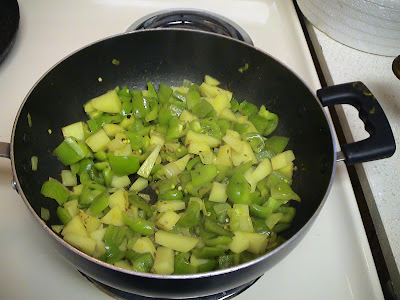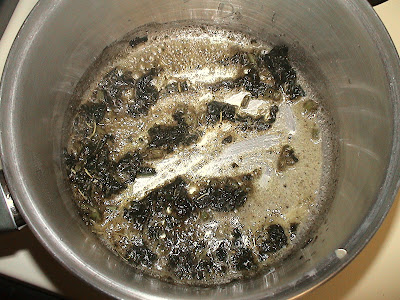Saboodana kichdi
This is a maharashtrian dish made with Sago rice (saboodana, seeme akki).
Ingredients
1. Sago rice - 4 cups (you get these in any indian store. They look like white pearls)
2. Ground nuts - 2 hands full.
3. Jeera- 2 for powder and 1/2 tsp for garnish
4. Green chillies - 2-3 (depending on your spice level)
5. Oil for the garnish - 2 tsp
Preparation:
1. Wash the sago rice and soak it in water for 1 to 1 1/2 hours. The soaking time depends on the brand of sago rice you got. Some become soft quickly and some need a little more time. So best thing is after about an hour, press some of the grains and see if it is soft. Some may remain hard. Don't worry about those as long as most of the rice is soft.
2. Then drain all the water out and let it dry for a few minutes on a plate. The best thing is to take little at a time in your hand and squeeze the water out and lay it on the plate. Sago tends to become sticky when cooked. So less the water, better it is.
3. While the sago is soaking, take a flat pan and dry roast the groundnuts and jeera. First fry the groundnuts till they start to turn brown and then in the end add jeera. Jeera roasts very quickly in about just a minute.
4. Let that cool. Then grind the roasted groundnuts, jeera and the green chillies to a coarse powder. Don't make it too soft a powder. Coarseness adds a nice texture.
5. Add this ground powder to the soaked and dried sago rice. Add salt to taste and mix it well.
6. Heat 2 tsps of oil in a pan. Add 1/2 tsp of Jeera for garnish. In a few seconds you will smell the Jeera roasting. At that time add the sago mixture and start frying.
7. Keep stirring/mixing the sago mixture frequently on medium heat. You will see that the color of the sago starts to turn pale from bright white. Also the groundnuts start to leave oil. Keep stirring till all the sago has turned to the pale color and the raw smell of the sago and green chillies are gone.
Saboodana is now ready to eat.
Tips: Do not add too much oil for the garnish since groundnuts also give out oil. Add salt to the dry mixture instead of when you add it to the pan as once sago starts to cook, they form clusters because of the stickiness and it becomes hard to mix the salt well.





































